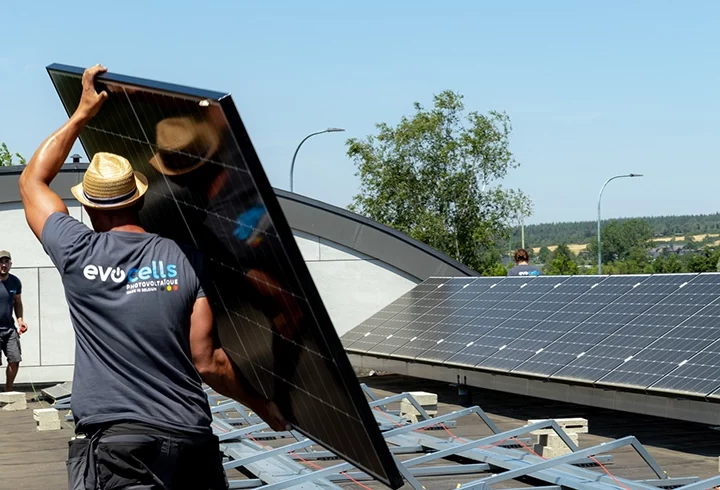Menu
The guide to understanding photovoltaic panels
The guide to understanding photovoltaic panels
Making the Right Choice
Solar energy, a sustainable and infinite energy source, has become a key player in the global energy transition. At the heart of this revolution are photovoltaic panels. Evocells provides you with a guide to understanding photovoltaic panels.
These clever devices transform sunlight into usable electricity for our homes and businesses. At Evocells, we strive to make this technology accessible to everyone.
The aim of this guide is to help you better understand how photovoltaic panels work. Moreover, discover the benefits they can bring to you and the environment.

Basic Functioning
Photovoltaic panels, composed of solar cells, transform sunlight into electricity. Each cell is made up of a thin layer of semi-conductive material, which generates an electric voltage when exposed to light. The electricity produced is then converted to be used in our homes and businesses.
Types of Photovoltaic Panels
There are three main types of photovoltaic panels: monocrystalline, polycrystalline, and thin-film panels. Monocrystalline and polycrystalline panels are composed of crystalline silicon cells.
Monocrystalline panels are generally more efficient, but also more expensive. Thin-film panels, on the other hand, use a variety of materials and are often more affordable and flexible, but less efficient.
Why Choose Solar Energy?
Opting for solar energy allows you to reduce your carbon footprint and make substantial savings on your electricity bill. Moreover, with government aids and innovative financing options, the installation of solar panels has become more affordable than ever.
Cutting-Edge Energy
Evocells' photovoltaic panels are a cutting-edge renewable energy solution, combining advanced technology, high efficiency, and exceptional durability. If you're ready to step towards a more sustainable future, Evocells is here to guide you every step of the way.

Evocells has been your photovoltaic specialist for over 15 years. We manufacture our own panels directly in Belgium. Through a network of partners or through our own care, they are installed professionally. Our team is also active in the installation of charging stations for electric cars.
